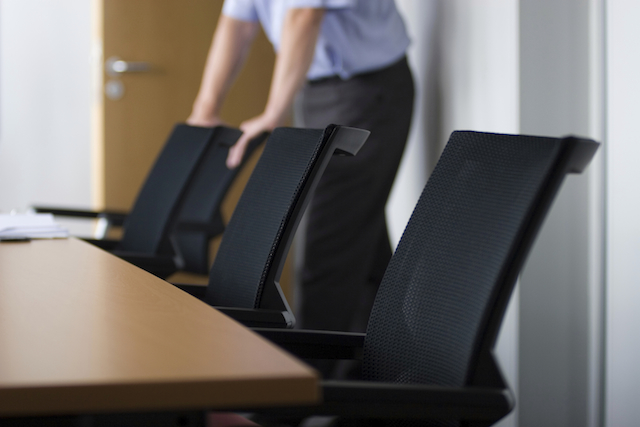While rearranging the chairs in the meeting room of a large corporation in central Tokyo recently, I realized that I now have no qualms about rolling up my sleeves and shifting the room layout to improve the presentation impact.
In the past, I might have hesitated and just done my best with things as they were – or not even thought about how the chairs and tables could affect the presentation.
It’s always good to request the room layout you want in advance, whether you’re presenting in front of an audience, speaking at a meeting, or talking one-on-one with a client or colleague. Even so, things might not be as expected when you enter. Here are five furniture-related tips that you might find helpful.
1. Prepare enough chairs
How many people do you expect to attend, maximum? That’s your ideal number of chairs. If you have too many, people may leave big gaps, making it more difficult for you to engage with everyone and for them to feel a sense of collaboration.
2. Arrange chairs appropriately
Ask yourself what’s the best layout for your speaking situation. For example, today’s large meeting rooms often have two screens to display presentation slides. Chairs are laid out in front of them. But if the number attending is relatively small, switch off one screen and arrange the right number of chairs in front of the remaining screen. This literally helps people to stay on the same page, keeping everyone focused together.
3. Lose the lectern
Some speakers like to hide behind the lectern or cling to it for support. It’s difficult to engage the audience that way. I recommend losing the lectern. Move it out of the room or to the side of the room or stage if you can. If not, move yourself away from it and into full view of your audience. Connect with them. You’ll increase your credibility and get your message across with more conviction.
4. Question any tables
Do you need tables? Sometimes they’re useful if people need space to write or work on something as part of your presentation. Often though, they’re just another barrier between you and your audience. Tables take up unnecessary space. You may be able to move them out or to the side to create a more collaborative setting with chairs in a semi-circle or in small groups.
5. Keep your eye on the clock
I was presenting at a venue a few months ago where a clock on a stand faced the audience. I promptly picked it up and moved it to the back of the room to face me. As a presenter, it’s my responsibility to be aware of the time and to finish on schedule. If a clock is easily visible at the back of the room, I can do this without breaking my engagement with the audience – very different from if I had to keep looking at a watch. Similarly, in one-on-one situations, such as communication-skills coaching sessions, I arrange the seating so that I have a clock in view and can keep my attention on the other person.
Now, you may say, “What about presenting in an auditorium with fixed seats or a boardroom with a fixed table in the middle?” Even with those limitations, I usually find something in the room to tweak, such as the lectern, clock, whiteboard, or flip charts. And if not, I rely on my delivery and any supporting materials to make the most of the presentation.
I always aim to arrive at venues early and immediately look for opportunities to improve the layout. More often than not, I’ll start to move the furniture. And I usually finish up moving my audience.
Give it a go and see what happens!

